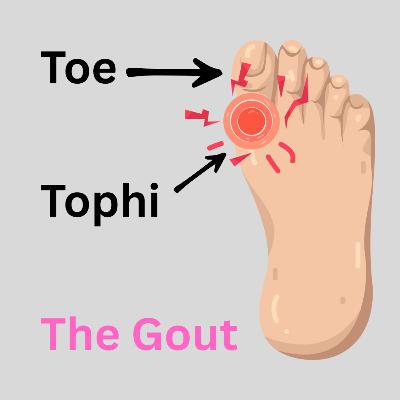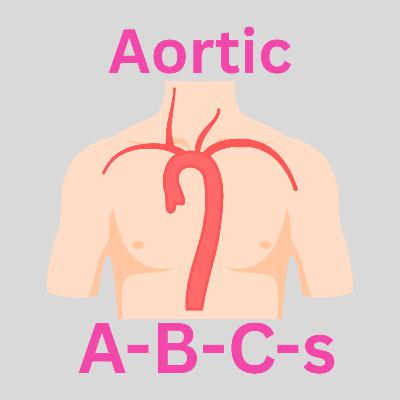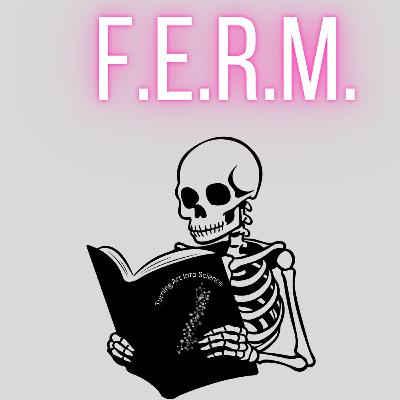Discover Mortuary Mnemonics
Mortuary Mnemonics

Mortuary Mnemonics
Author: Damon de la Cruz
Subscribed: 5Played: 11Subscribe
Share
© Damon de la Cruz
Description
A place to help Funeral Service Education Students study. We share mortuary science mnemonics that will help with classes, NEB and state exams. We also help licensed practitioner review concepts from the course they took while in school. This is a Tuesday Evening Publications production.
24 Episodes
Reverse
Let’s take a moment to talk about amino acids. Amino acids
are the building blocks of proteins. Embalming can, in part, be defined as the use of chemicals to stabilize
proteins. That being said, the reaction between embalming chemicals and proteins really occurs at the amino acids level.
There are over 500 amino acids that exist in nature. Of that there are about 20 that are necessary for human life. The number is debatable but
for our purposes let’s assume the magic number is 20. Of these 20, there are two groups. Some of these amino acids are produced through metabolism and others we don’t produce. We must get them through food stuff.
An amino acid produced by our body is referred to as non-essential.
If we have to obtain from food, because we can’t synthesize them, they are called essential.
And here is our mnemonic.
Of the twenty amino acids, 12 are made by our cells! The rest are obtained by eating food. Some simple arithmetic (20-12) gives us that the
remaining number of amino acids is eight.
The number of essential amino acids is eight, and you eat them to get them.
You ate the eight.
Pathology has a lot of vocabulary that sounds very similar. For example, hypertrophy, hyperplasia and aplasia. These similar
sounding words can get confusing. Knowing the pre-fix, suffix, and root words can be helpful in times like these. But sometimes there is a mnemonic in there
that can help alleviate stress.
Let’s take a look at Hypertrophy and hyperplasia. Hypertrophy is the enlargement of an organ or tissue from the increase in the size of its CELLS. An example of this would be the result of working out to increase muscle size. Conversely, hyperplasia is an increase in a tissue or organ caused by an increase in the reproduction rate of its cells. This is observed in cancer.
So here’s the mnemonic and it helps with two vocabulary words, hypertrophy and hyperplasia. Within the word Hypertrophy, is the word trophy.
Everyone prefers one large trophy, not a bunch of small ones. So when you see the word hypertrophy, think of one large trophy and you’ll be reminded about large cells versus an increase in the number of cells as tissues become enlarged.
Hopefully this mnemonic helps you get through some pathology.
Today’s mnemonic covers a casket part. It’s helpful if you are familiar with some romance languages.
So, there are a lot of casket parts that you get to be familiar with, the gimp, the ogee and others. Some are easy to remember, others are not. Additionally, many of them have synonyms. This makes it even more challenging to manage all these terms.
One of the casket components that has multiple synonyms is the Lug. It’s that part of the casket handle that is attached to the casket body. The lug is also known as the ear, likely based on the fact that simple lugs have a shape that is similar to a human ear.
And here is the mnemonic for the day. The third synonymous term for lug. Its “Escutcheon.” It’s kind of a strange word. But if are familiar with Spanish you may know that escúchame means listen to me. It’s derived from escuchar meaning to hear. The words escúchame and escutcheon are clearly related.
So, if you are familiar with escúchame then you will remember escutcheon also means ear or lug!
Dr. Richard Burr was a civil war embalmer. You’re probably familiar
with the photograph of him at his tent embalming with no PPE. We credit him
with being the impetus of the establishment of rules for embalmers and
undertakers. This is because he was allegedly
burning down the embalming tents of his competitors.
His last name Burr, sounds a lot like “burn”, making it easy
to recall his role in funeral history.
The diaphragm is a dome shaped muscular partition between the
thorax and the abdomen in mammals. It
has a functional role in breathing. Like
all muscles the diaphragm requires a supply of oxygenated blood. The arteries that supply the diaphragm with oxygen
are the phrenic arteries.
There are superior and inferior phrenic arteries. The superior
supplies the superior aspect of the diaphragm and the inferior supply the
abdominal aspect of the diaphragm.
I know anatomy is a huge subject and there seems to be a lot
of memorization but here’s a handy tip for remembering the phrenic arteries and
the diaphragm.
They both have “ph” in them creating the “fa” sound. You don’t see “ph” too often in anatomical
structures. Phrenic arteries and
diaphragm are two of them.
Erythrocytopenia, leukocytopenia, leukopenia,
osteopenia these are some of the terms you will come across in your Funeral Service Pathology class. I think it’s a good idea to study the prefixes
and suffixes of medical terms as they tend to repeat themselves.
Here we see penia as in cytopenia, leukopenia. Penia was the Greek Goddess of Poverty. Her role was to
teach humans to be productive and humble.
To me the Penia sounds a lot like penny so it’s an easy connection.
Therefore, anything-penia is a deficiency in something. Here’s an example Erythrocytopenia, Erythrocyte is a red blood cell add penia to that and you have a deficiency of red blood cells.
One of the conditions that you need to know for your career and the NBE is Spina Bifida. Spina
Bifida is a condition that affects the spine, it’s typically observed in newborns. Spina bifida is an umbrella term
that covers several different variations. You will need to memorize three of these and know how to treat them in the embalming room. The three conditions are Occulta, Meningocele, and Myelomeningocele.
Briefly, occulta is the least severe.
Meningocele is denoted by moderate severity
Myelomeningocele is the most severe.
I know all of these names are a mouthful
and you do need to know the condition associated with each but here a mnemonic
to start you off. It’s a simple one, and
hopefully that helps you along your path.
Occulta is the least severe and the shortest name
Meningocele is “middle severity” and the “middle length name
Myelomeningocele is the most severe and the longest name.
Additionally, the conditions names become more complex to
pronounce, this also helps remember the complexity of the condition.
Hey there Funeral Service People, here’s a quick mnemonic for your vascular guides. As you know the vascular guides are important for locating and identifying the arteries that can be accessed for the purpose of embalming.
The guides are built off known anatomical structures. To successfully use the guides, you will need to know a lot of anatomy. This means there can be a lot to memorize. So, let’s add a mnemonic that will help make this a little easier.
The guide for the posterior tibial artery includes a structure called the Medial Malleolus. This is the boney protrusion that is found at the interior region of the ankle. Visualizing and, therefore, recalling where this structure can be difficult. Luckily for us the Star on Converse Chuck Taylor’s is sits right over the medial malleolus. I like to think that Mr. Taylor was fan of anatomy and struggled with the Medial Malleolus, otherwise the logo would be on the outside of the shoe where people could see it easily. So when you’re studying for an exam, quiz or the boards, take a look at your favorite pair of high-top sneakers with the, oddly place on the inside, logo. Personally, I prefer the black-on-black Chucks.
Today’s mnemonic covers anticoagulants. Its widely understood that aldehydes function best with modifying agents. Modifying agents are chemicals added to embalming solution that help decrease molecular cohesion, add moisture to tissue, add color to tissue and help decrease clots that can form in the vascular system. Clots will negatively impact the distribution of your arterial solution through the vascular system.
Anticoagulants use di-carboxylic acids to trap calcium so that it can’t interact with molecules in the vascular system and cause them to coagulate. You may recall that the development of anticoagulants included oxalates, citrates and chelating agents like EDTA. Oddly enough, at one point oxalates were favored but fell out of popular use because they were too toxic…I know it sounds funny to say something is too toxic for an embalming chemical. Anyhow, I’ve always thought that the words Oxalate and Toxic sound very similar, so I created a contraction that helps me remember that oxalates were toxic and are no longer favored. That contraction is T-oxalates.
If you’re a Funeral Service Education student, then you need be familiar with Microbiology. Microbiology is one of those subjects that require a lot of memorization. Bacteria shapes are typically discussed at the beginning of the course. This tip is for the simplest shaped bacteria, cocci. You may be familiar with the North African dish made of tiny steamed balls of semolina flour called couscous. If you are you’ll have an easy time remember bacteria of a similar spherical shape are referred to as cocci.
If you eat couscous, cook some up and you’ll never forget cocci! If you aren’t familiar with couscous, I suggest giving it a try. It's got a lot of versatility and can accompany a wide variety of dishes. Plus exploring this food option will help you with your Funeral Service Microbiology!
Couscous is so good, they named it twice.
Postmortem chemical and physical changes can be so difficult to remember. Today’s mnemonic incorporates a Al Gore known for his role in the elucidation of Climate change through speeches and the popular movie released in 2006 An Inconvenient Truth.
The postmortem physical change we need to know is Algor mortis, AL- GOR mortis. Its the body’s acclimation to ambient temperature. It’s a change in temperature.
Al Gore’s global warming campaign was about a change in temperature! What a fun mnemonic, AL Gore and Algor two very different things that deal with temperature!,
A two for one! Today we bridge anatomy and ceremonies. From your ceremonies class you probably learned the term genuflect. This refers to lowering of the body by bending a knee to the ground. This it often seen in ceremonies as a sign of worship.
In anatomy we refer to the six arteries that in the leg branch from the distal femoral and the popliteal arteries as the genicular arteries. Genicular is Latin for "knee."
There you have it! Genuflect and genicular arteries, both deal with the knee.
Here’s a mnemonic for your history class.
Ancient Egyptian embalming/mummification included canopic jars. These are containers that were used to store viscera that had been dried in natron that was not returned to the body.
There were four canopic jars and describes the tops of the jars as representative of the children of Horus. These are described as a jackal head, a human head, a hawk head and an ape head.
Each jar contained specific viscera. Here is where our mnemonic lies!!
The jar with the ape head contained the lungs….You may have seen video of an ape beating on its chest considered to be for mating or intimidation. Well, the lungs are right under where the ape is beating! So when I try to remember what viscera is in the canopic jar with an ape head, I just think about what I ‘ve seen apes to at the zoo and on TV.
The various strains are either Oral fecal or Blood borne but which is which?
Is A blood borne?
Is C blood borne?
Here’s a simple mnemonic that will help you differentiate these forever.
A and E are vowels, Oral/fecal begins with O, which is also a vowel. (Pro-tip - the vowels are bowels)
B, C, and D are consonants, and Blood borne begins with a consonant.
Just remember Vowels and Consonants and you’ll never forget the modes of transmission of the various hepatitis viruses
An easy way to remember the three parts of the small intestines in the anatomical order they are found. Duodenum, Jejunum, Ilium. If you take the first letters of Duodenum and Jejunum you get DJ, then add Ilium for D.J. Ilium!
When you think gout, think TOE, because that’s where it loves to start. The big toe joint, or first metatarsophalangeal joint, is the classic site for that sharp, fiery pain that wakes people at night.Now add TOPHI spelled T-O-P-H-I those are the chalky white deposits that form when uric acid crystals build up over time. Think of them as little mountains of urate that appear on ears, elbows, or even fingers.So remember: TOE for the first attack, TOPHI for the chronic stage.Gout begins in the toe and ends with tophi. It's a simple way to recall the progression from acute inflammation to long-term crystal buildup.That’s your minute mnemonic — TOE and TOPHI — from acute pain to chronic deposit.”
“ABCs of the Aortic Arch.”A is for Aortic Arch – the main curve of theaorta.From there, the branches go in this order:B – Brachiocephalic arteryC – Left Common carotid arteryS – Left Subclavian arteryThink: A – B – C – S.Quick tip: the brachiocephalic only comes off the rightside—so it later splits into the right subclavian and right commoncarotid. The left side gets its own direct branches.
Rigor mortis, the stiffening of muscles after death due to fluctuation
in ATP levels. Rigor mortis can make it
challenging to position a body for preparation. But don’t worry—our mnemonic,
F.E.R.M., makes the process straightforward and easy to remember. Let’s break
it down:
F is for Flex.
Start by gently flexing the joints. For example, bend the arms at the elbows or
the legs at the knees. The goal here is to loosen up the major joints without
applying excessive force.
E is for Extend.
Once the joint has some flexibility, extend it slowly. Straighten out the limbs
to encourage the muscle fibers to relax further.
R is for Rotate.
Now, rotate the joints gently. This helps stretch out the muscles and break
down the stiffness even more. Think of this as a circular motion—nothing sharp
or sudden.
M is for Manipulate.
Finally, manipulate the muscles by massaging or pressing along the limbs. This
final step can release any remaining tension, ensuring the body is ready for
proper positioning.
Remember, the key is to take your time and use a respectful, measured approach.
Flex, Extend, Rotate, and Manipulate—F.E.R.M.—it’s simple, effective, and
dignified.
Phocomelia s a congenital condition that involves
malformations of human arms and legs that is most often described as having flipper-like appendages. However, it can manifest in other regions of the body resulting in shortened neck, abnormalities in the urethra, and hydrocephalus.
A cause of phocomelia is the mother being prescribed certain chemicals during pregnancy. However, the causes of most cases are idiopathic.
For the purposes of mortuary school, phocomelia is described as a condition in which the proximal portions of the limbs are poorly developed or missing.
As with many medical terms, phocomelia can be broken apart into smaller words. Here melia refers to a condition of the limbs. Melos is Greek for limb. I suggest keeping this one in the memory banks as it will come up in the future.
Today we will focus on Phoco. Phoco is derived from phoca. Phoca is a genus of seals. For our purposes let’s simply commit to Phoco means seal. If you think of a seal you will recall these cute aquatic creatures do not have arms, only flippers for upper extremities. This is the description of phocomelia. Distal portions only, no
proximal portions. Think seals! Also, I apologize for the flagrant use of the phoco during this podcast.
Hemoptysis
Here’s a mnemonic that I overheard in class one day.
It’s for the word Hemoptysis.
Hemoptysis is the coughing up or spitting of blood from one’s lungs. It can be a sign of
a serious medical condition. It can be caused by infections such as
tuberculosis, cancer, and problems in blood vessels in the lungs.
In my class hemoptysis is introduced with several other
terms that are new but have similar meaning, epistaxis, melena and others. This
creates a perfect occasion for a good mnemonic.
Here is the one that I heard: When you say hem-pt-ysis you can put an emphasis on the “pt” sound and
create a sound that is similar to a “spitting” sound. Of course, spitting often includes involves sputum
so the correlation is solid.
I hope this helps you manage some of the pathology terms to
get you through the boards.
























